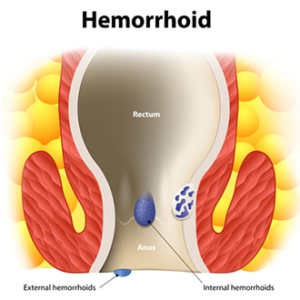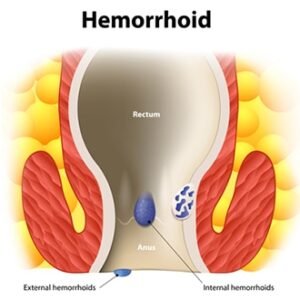Penile Disorders and Diseases
Penile Disorders and Conditions
Understanding Penile Health: Common Disorders and Diseases
The penis is a highly intricate organ made up of various nerves, muscle tissues, blood vessels, and other tissues, all working together to facilitate functions such as urination, erection, and ejaculation. Unfortunately, a variety of diseases and conditions can affect the penis, leading to complications that may interfere with its normal functioning or appearance. These conditions may be congenital (present from birth), neurological, neoplastic (tumor-related), or infectious in origin. Urologists, specialists in disorders of the urinary tract and male reproductive organs, are the primary healthcare providers addressing these concerns.
1. Peyronie’s Disease: A Connective Tissue Disorder
Peyronie’s disease (PD) is a condition that affects the connective tissues of the penis. It is characterized by the formation of fibrous plaques within the penile tissue, leading to abnormal bending or curvature of the penis during erection. While some degree of curvature is normal, PD causes an abrupt change in shape, often causing discomfort or distress.
Signs and Symptoms of Peyronie’s Disease:
-
Abnormal curvature of the erect penis (up, down, or sideways)
-
Painful erections or discomfort during sexual intercourse
-
Hardened lumps or plaques at the site of the bend
-
Visible indentations or “divots” in the penile tissue
Erectile dysfunction (ED) is common in men with PD, although not all affected individuals experience it. While the exact cause of PD is unknown, it is believed to result from repetitive trauma or injury to the penis, which leads to plaque formation in the tunica albuginea (the tissue surrounding the spongy erectile bodies).
Treatment Options for Peyronie’s Disease: Currently, there is no guaranteed cure for PD. Treatment approaches include:
-
Vitamin E supplements and other medications
-
Injectable treatments
-
Penile traction therapy
-
Surgery (including the Nesbit procedure or grafting)
-
Penile implants in severe cases
In 2013, the FDA approved Xiaflex, an injectable medication that helps dissolve the plaques responsible for penile curvature.
2. Penile Cancer: A Rare but Serious Concern
Penile cancer is rare, affecting fewer than 2,000 men per year in the U.S. Most penile cancers are squamous cell carcinomas, which occur in the skin or mucous membranes. Risk factors include human papillomavirus (HPV), smoking, phimosis (tight foreskin), and age (typically men over 50).
Signs and Symptoms of Penile Cancer:
-
Thickening of the foreskin or glans
-
Reddish, velvety rash beneath the foreskin
-
Bleeding or discharge from the penis
-
Difficulty retracting the foreskin
-
Pain or burning sensation during urination
Penile cancer is diagnosed through a biopsy, and treatment options depend on the cancer’s stage and location. These may include surgery, radiation, chemotherapy, or immunotherapy.
3. Urethral Disorders: Hypospadias and Epispadias
The urethra is the tube that carries both urine and semen through the penis. Disorders of the urethra can be congenital, such as hypospadias and epispadias, which affect the opening of the urethra.
-
Hypospadias is a condition where the urethral opening is located on the underside of the penis, rather than at the tip. It can lead to difficulty with urination and ejaculation, and sometimes causes a downward curve in the penis (chordee). Surgical correction is often needed.
-
Epispadias is a rarer condition where the urethra does not fully develop, causing the opening to be on the top or side of the penis. This condition is more severe than hypospadias and can lead to urinary incontinence and infertility if untreated.
4. Foreskin Issues: Phimosis and Its Effects
The foreskin, or prepuce, is the tissue covering the glans of the penis. It plays a vital role in lubrication and protection. However, issues such as phimosis can arise, particularly in adult men.
Phimosis refers to the inability to retract the foreskin over the glans, which can cause discomfort, particularly during erections or sexual activity. In some cases, phimosis is associated with infections like balanitis, or other inflammatory conditions.
Symptoms of Phimosis:
-
Pain during erection
-
Scarring of the foreskin
-
Swelling or redness of the glans
-
Difficulty urinating
-
Frequent urinary tract infections (UTIs)
In severe cases, phimosis may require surgical intervention, such as circumcision or other methods to relieve the condition.
Conclusion: Maintaining Penile Health
Penile disorders, although often concerning, can usually be managed effectively with the help of a healthcare professional. Regular checkups with a urologist, self-examination, and maintaining overall health through proper hygiene and lifestyle choices can aid in the prevention and treatment of many conditions. If you experience any signs or symptoms of penile disorders, seeking prompt medical advice is essential for appropriate management.
Frequently Asked Questions
What is Erectile Dysfunction?
Erectile dysfunction (ED) refers to the inability to achieve or maintain an erection sufficient for sexual intercourse. It can be caused by various factors, including psychological stress, hormonal imbalances, and underlying health conditions like diabetes or cardiovascular disease.
Expert Tips for Healthy Penile Function:
-
Maintain a balanced diet and exercise regularly to support overall health.
-
Avoid smoking and limit alcohol consumption to reduce risk factors for conditions like penile cancer and ED.
-
Practice good hygiene to prevent infections that can affect the penis and foreskin.
Key Takeaways:
-
Peyronie’s disease, penile cancer, urethral disorders, and foreskin issues are some of the common penile conditions that may require medical attention.
-
Early diagnosis and treatment can significantly improve outcomes.
-
Consulting a urologist is crucial for anyone experiencing symptoms of penile disorders.
Join Our Community for More Health Tips
Stay informed and proactive about your health by subscribing to our newsletter, where we provide the latest updates and expert tips for maintaining your overall well-being.






